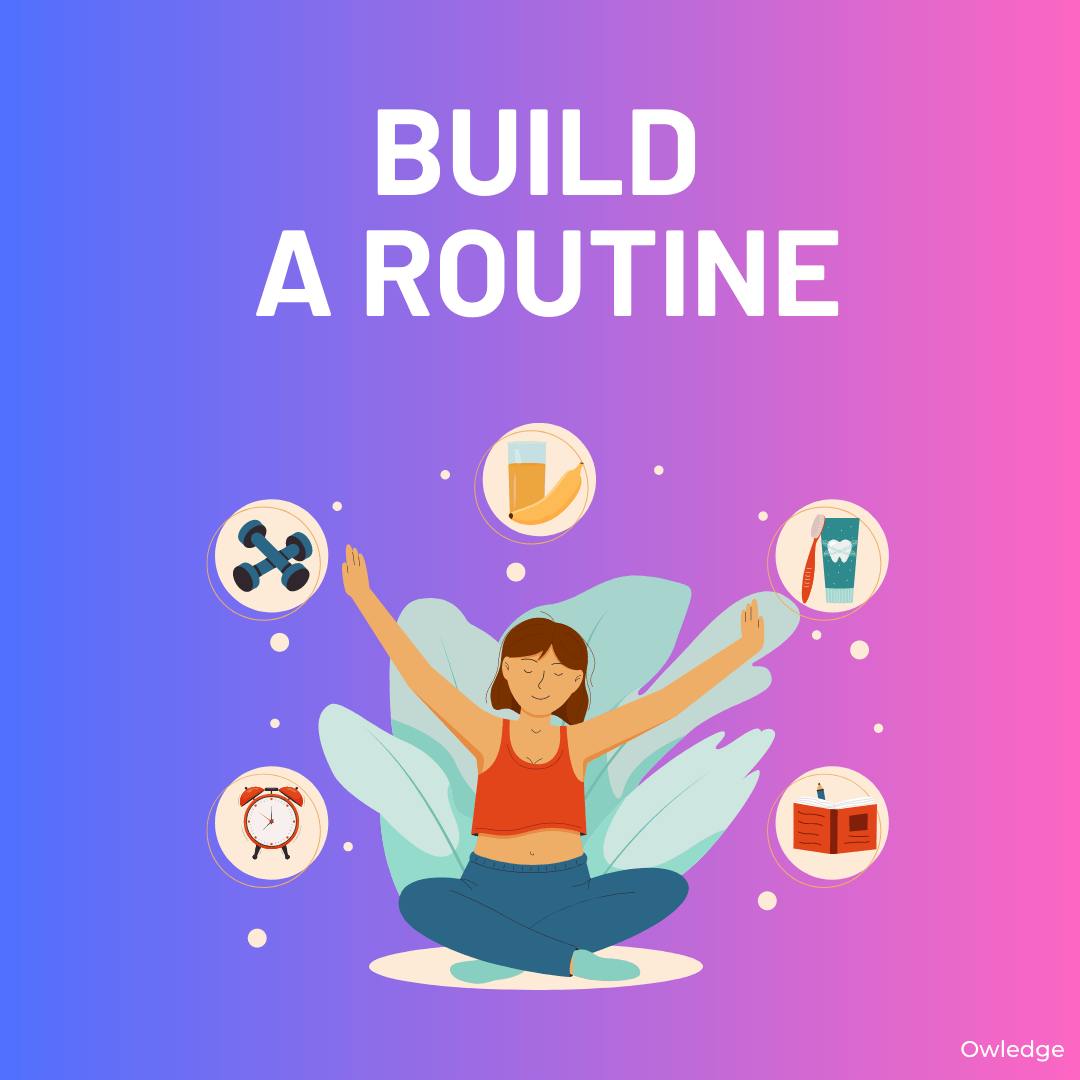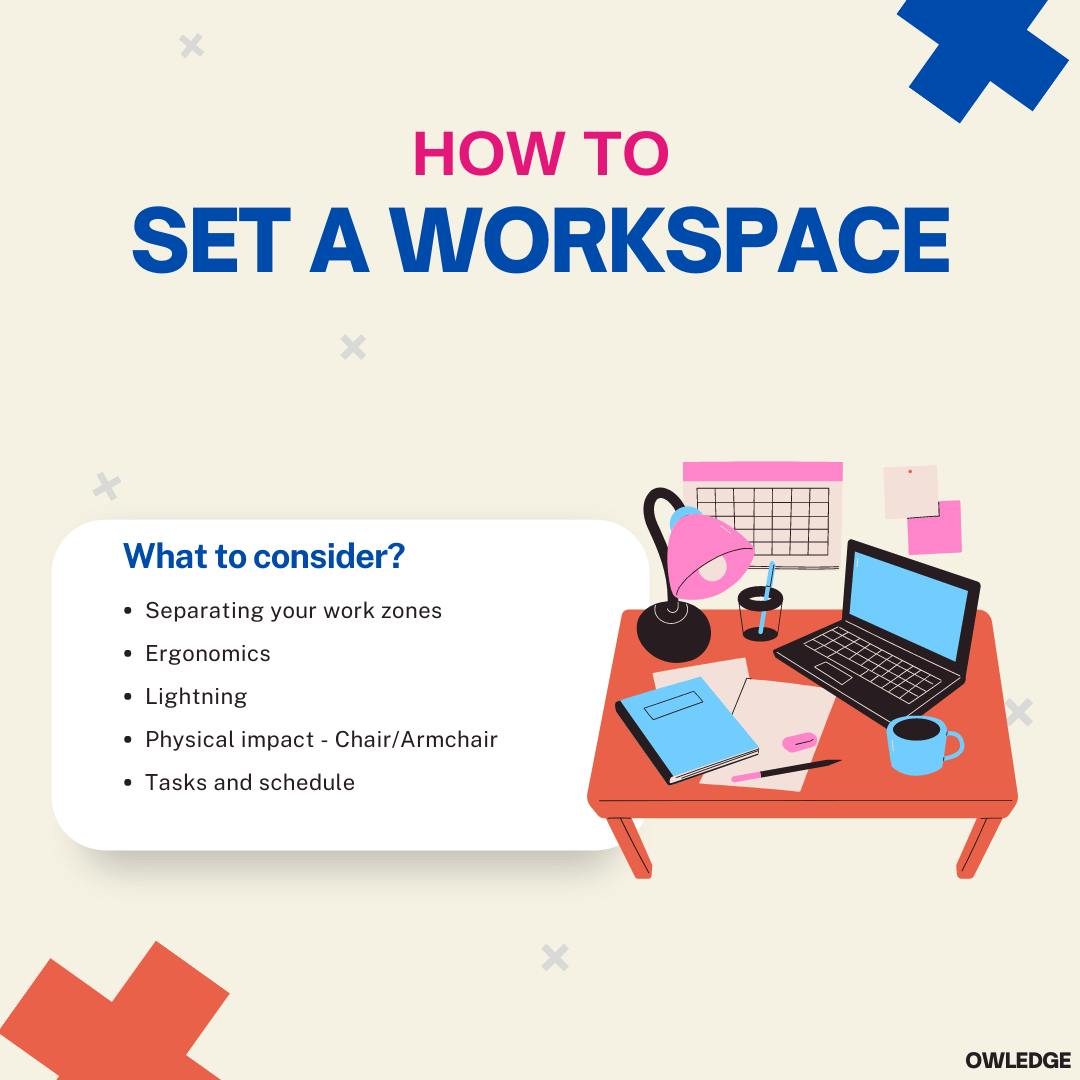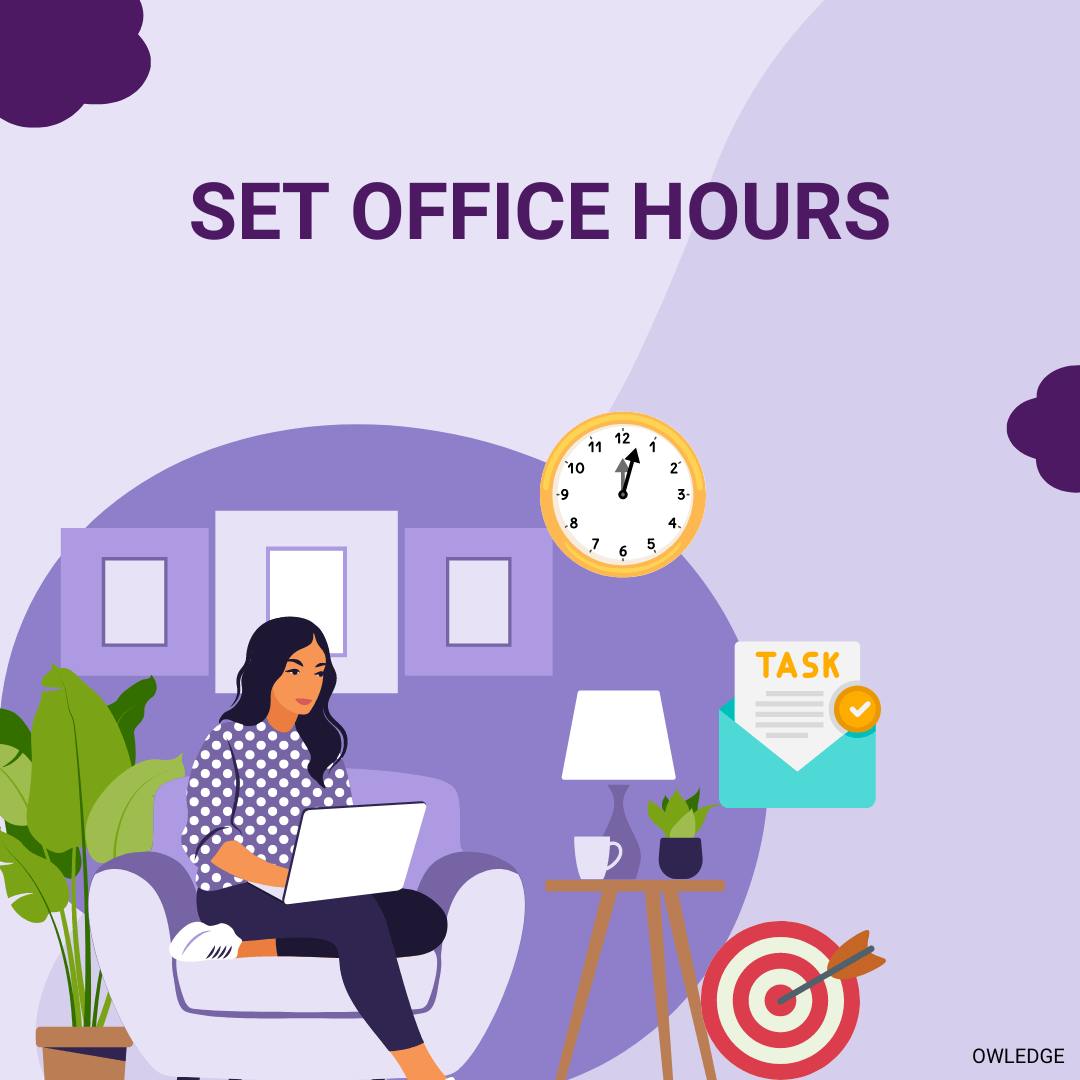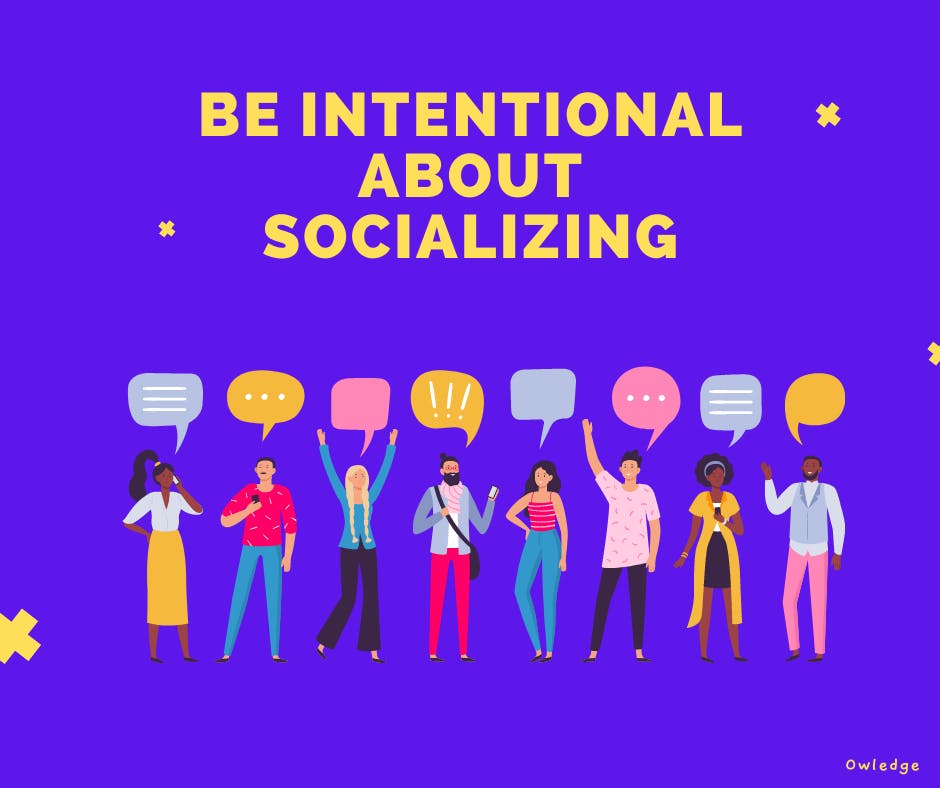
January 02, 2023
What Is Remote Work? Learn How To Work From Home
3 years ago remote work was something only a few people would do. It seemed it was reserved for freelancers or consultants only. Now, due to unprecedented events, many organizations have transitioned from office work to remote work. Work from home becomes more and more traditional today.
We want to share 7 tips to help you through this transition so you can make the most of it. With these tips, you'll develop a healthy work-life balance, boost your motivation and increase your productivity. You will not want to go back to an office!
Working From Home With Kids course - if you're struggling to work productively at home with kids.
Tip 1: Build a routine 🎯
One of the most appealing aspects of working from home is the flexibility it gives you. You have the option to work in your pyjamas and whenever you want! However, remote work is still work, and you must treat it as such.

We would like to recommend some techniques you can try:
Embrace "Anti-Goals"
Instead of solely focusing on what you want to achieve in your routine, consider what you want to avoid. Identify habits, distractions, or activities that hinder your productivity or well-being, and make them "anti-goals."
For example, an anti-goal could be to avoid checking social media during work hours or refraining from unhealthy snacks. By avoiding these counterproductive behaviors, you create space for positive habits and improve your chances of sticking to the routine.
Leverage the Power of "Anchor Tasks"
Anchor tasks are activities that serve as a foundation for the rest of your routine. These tasks should be simple, easy to accomplish, and preferably enjoyable. Start your day with one or more anchor tasks that you can complete quickly. It could be something as simple as making your bed, doing a quick stretching routine, or writing a short journal entry.
By completing these tasks, you'll experience a sense of accomplishment and motivation to continue with the rest of your routine.
Incorporate "White Space"
We tend to overfill our schedules often, leaving little room for spontaneity or relaxation. Consider incorporating "white space" – periods of time left open for unexpected opportunities or moments of rest. This white space can help you stay adaptable to changes in your day and reduce stress associated with rigid schedules.
Use this time for creative thinking, self-reflection, or engaging in activities that bring you joy.
Pomodoro Technique
Experiment with different time management techniques, such as the Pomodoro Technique (working in focused intervals with short breaks) or time-blocking (scheduling specific tasks within designated time slots). Tailor your routine to suit your natural energy levels and preferences.
Remember that building a routine takes time, so be patient and flexible with yourself. Establishing a “getting ready to work” routine will help you put your game face on and start the day on a productive note. So get dressed, make your bed, have some breakfast and get ready to start work at a set time every day.
Tip 2: Set a workspace 👩🏼💻
You might be tempted to work from the comfort of your bed or couch. But, separating your works space from your living space is super important when working from home. Think of it as a way to keep work in one place, so you don't bring it home with you at the end of the day.

Depending on your living situation, your workspace might look different from others. For some of you, it’s a spare bedroom turned into a home office, and for others, it is simply a desk tucked in a corner.
Our team created a comprehensive guide called Creating your ideal workspace, check it out!
Whatever you choose your workspace to be, the rule is this: if you are there, you are there to work. This separation will help you get into the right mindset and workflow, and it will also make relaxing a lot easier once you finish your workday.
Tip 3: Get rid of distractions 🗑
When you work from home, you are surrounded by your favourite things; it is easy to get distracted. Plus, with no supervision, it is easier to get away with activities unrelated to work. Remote work requires self-discipline, and one of the easiest steps to take towards it is to remove all distractions.
You would ask us, what are distractions? I don't have any. Let's count:
- Social Media 📲: The allure of social media platforms, such as Facebook, Twitter, Instagram, and TikTok, can be irresistibly tempting, leading to time-wasting scrolling and browsing.
- Television and Streaming Services 📺: Having access to a vast array of shows and movies on streaming platforms can be a significant distraction, especially during breaks.
- Household Chores 🧹: Household tasks, such as cleaning, doing laundry, or organizing, may entice individuals to procrastinate on their work or study responsibilities.
- Family Members or Roommates 👨👩👦: Interactions with family members, children, or roommates can be both delightful and disruptive, diverting attention from work or study.
- Pets 🐕: The presence of beloved pets can be heartwarming, but their playful nature or need for attention can interrupt focused work.
- Snacks and Food 🍕: The proximity of the kitchen and availability of snacks might lead to frequent trips for food, breaking the flow of concentration.
- Online Shopping 🛍 🛒: The ease of online shopping can lure individuals into spending time browsing products and making unnecessary purchases.
- Noise from Surroundings 🥁: Noise from neighbors, construction, or household appliances can be a significant source of distraction.
- Internet Surfing 💻: Unrestricted access to the internet can lead to browsing unrelated websites or engaging in non-work-related activities.
- Personal Phone Calls 📞: Frequent phone calls from friends or family during working hours can disrupt concentration and workflow.
- Video Games 🎮: Gaming consoles or online games can be addictive distractions, consuming precious time and energy.
- Daydreaming 💁🏼♀️: Without the structured environment of an office or classroom, daydreaming or getting lost in thoughts can be common distractions.
To minimize these distractions and improve productivity, creating a designated workspace, setting clear boundaries with family members or roommates, scheduling regular breaks, and using productivity tools and apps can be effective strategies.
Staying disciplined, setting specific goals, and adhering to a consistent routine can help individuals stay focused and achieve their objectives while working or studying from home. Apps like Offtime will help you limit and restrict your social media usage.
Tip 4: Plan your day 📙
Stay focused and on track during your workday by planning it. Set yourself goals for the week and then for each day. Invest in a good agenda or try an online project management tool like Trello, Asana, or Monday. Establishing a plan will give you structure and will optimize your productivity. You'll feel a great sense of accomplishment when you complete the goals on your list.

If you want to manage your time like a pro, check out our Mastering Time Management course!
Bonus tip: avoid multitasking, focus on one task at a time.
Tip 5: Set office hours 🕘
When you start working from home, it is essential to set expectations, both with your employer or clients and the people you live with. Those expectations include defining your work schedule or “office hours”.

Does working from home mean you can work any time you want as long as the work gets done? Or are you expected to be on from 9-5? Have that conversation early on with your employer.
Once defined, communicate that schedule with the people that share a space with you. Working from home does not mean you’re 100% available for them. You’ll thank yourself for setting these expectations early on. And, it will be easier for you to separate work time from home time.
Tip 6: Take a break ⏱
No commute is one of the best things about working from home. But the downside to this is that you are pretty much home all day. Take small breaks throughout your day to stretch or take a walk around the block.
These breaks are not only a physical break but a mental one. A change of scenery and a breath of fresh air sometimes is all you need to clear your mind and re-focus. When you return to work, you’ll be ready to tackle the next task. Make sure you schedule your breaks and add them to your agenda (see tip 5).
Tip 7: Be intentional about socializing 🙋🏼♂️
In an office environment, you are in the company of other people. Little but meaningful interactions happen throughout the day while you’re getting coffee, having lunch or on your way to the washroom.

Working from home is a solitary job, and we miss out on these moments of social interaction. Make an effort to create those conversations. Schedule some time of your day or week to catch up with your team for a morale boost.
If you work independently, reach out to your friends and family. Maintaining human interaction will keep you motivated.
Conclusion📍
Switching from office to remote work does not have to be a hard transition. The secret lies in finding the balance between work and your living space. Treat your workdays as workdays and set clear boundaries. Build a routine and create habits to strengthen your self-discipline. But most importantly, enjoy the process and make the most of it!
### Useful Links
What is Owledge? - Learn more about Owledge in 1 short article.
Join Our Discord Community - we post 100+ freelancing jobs, news and trends daily!
Try Owledge For Free - to explore our app for freelancers, agencies, solopreneurs and small businesses!
You can also follow us on Facebook, Twitter, Pinterest & LinkedIn.